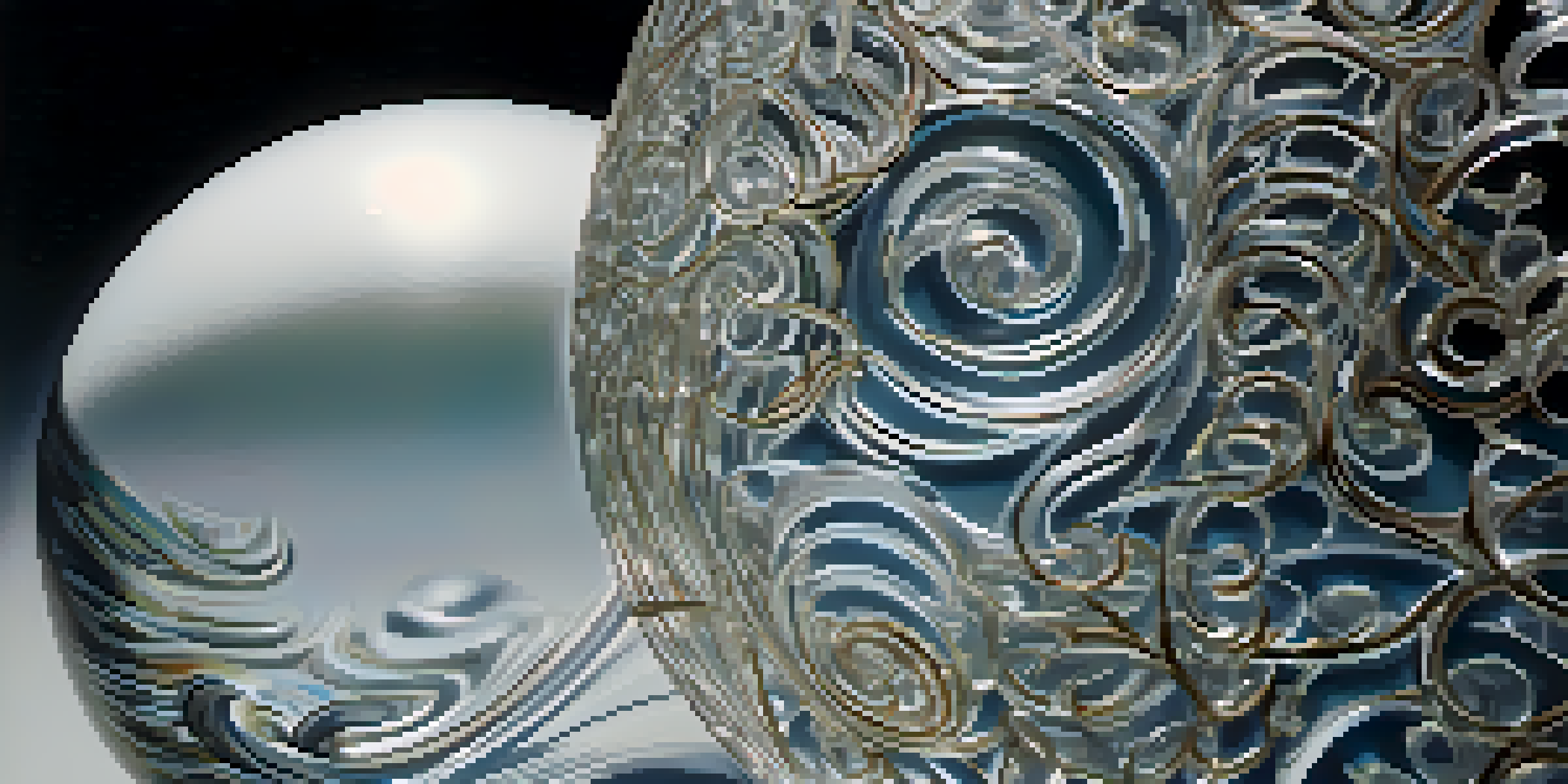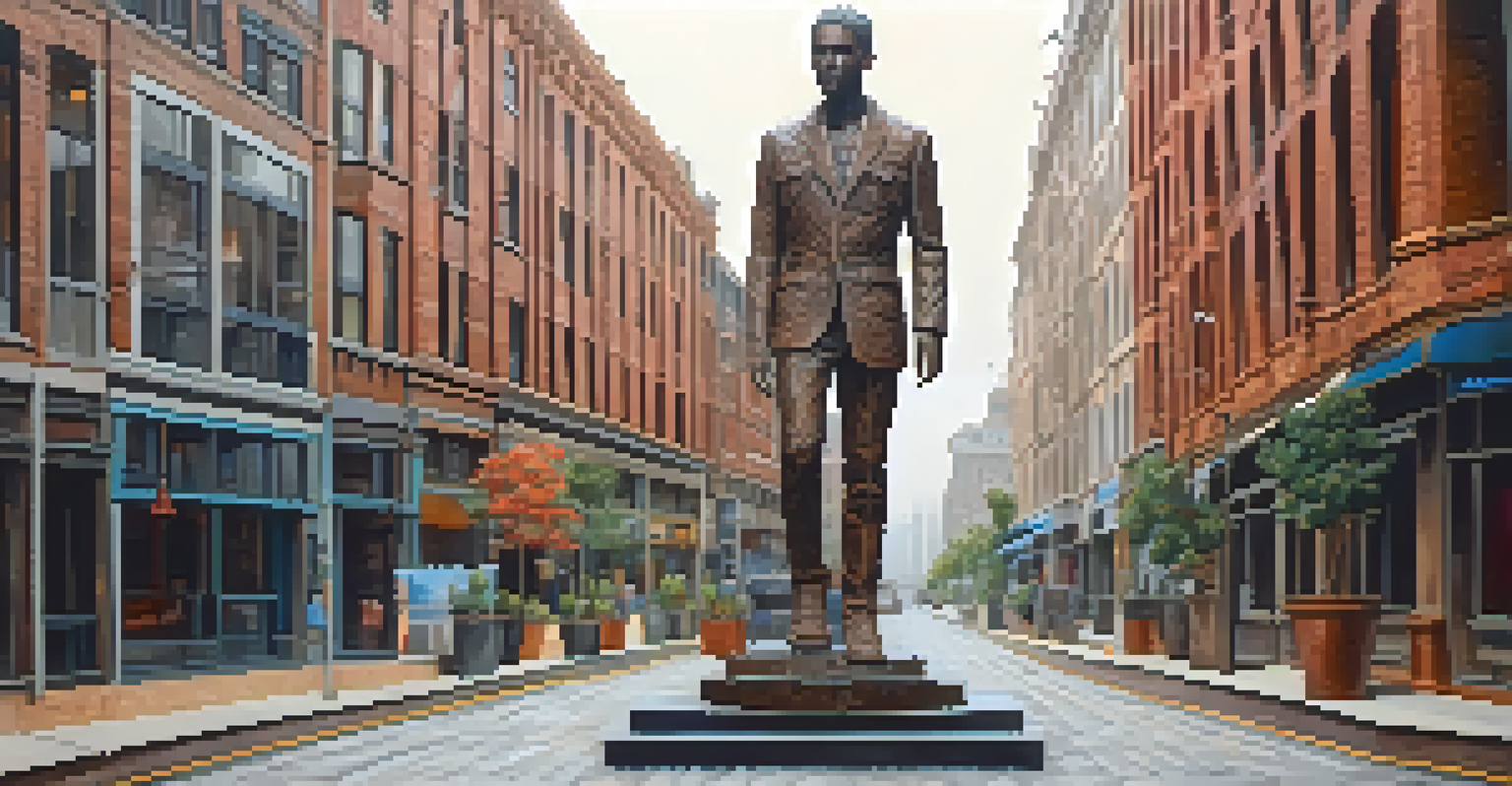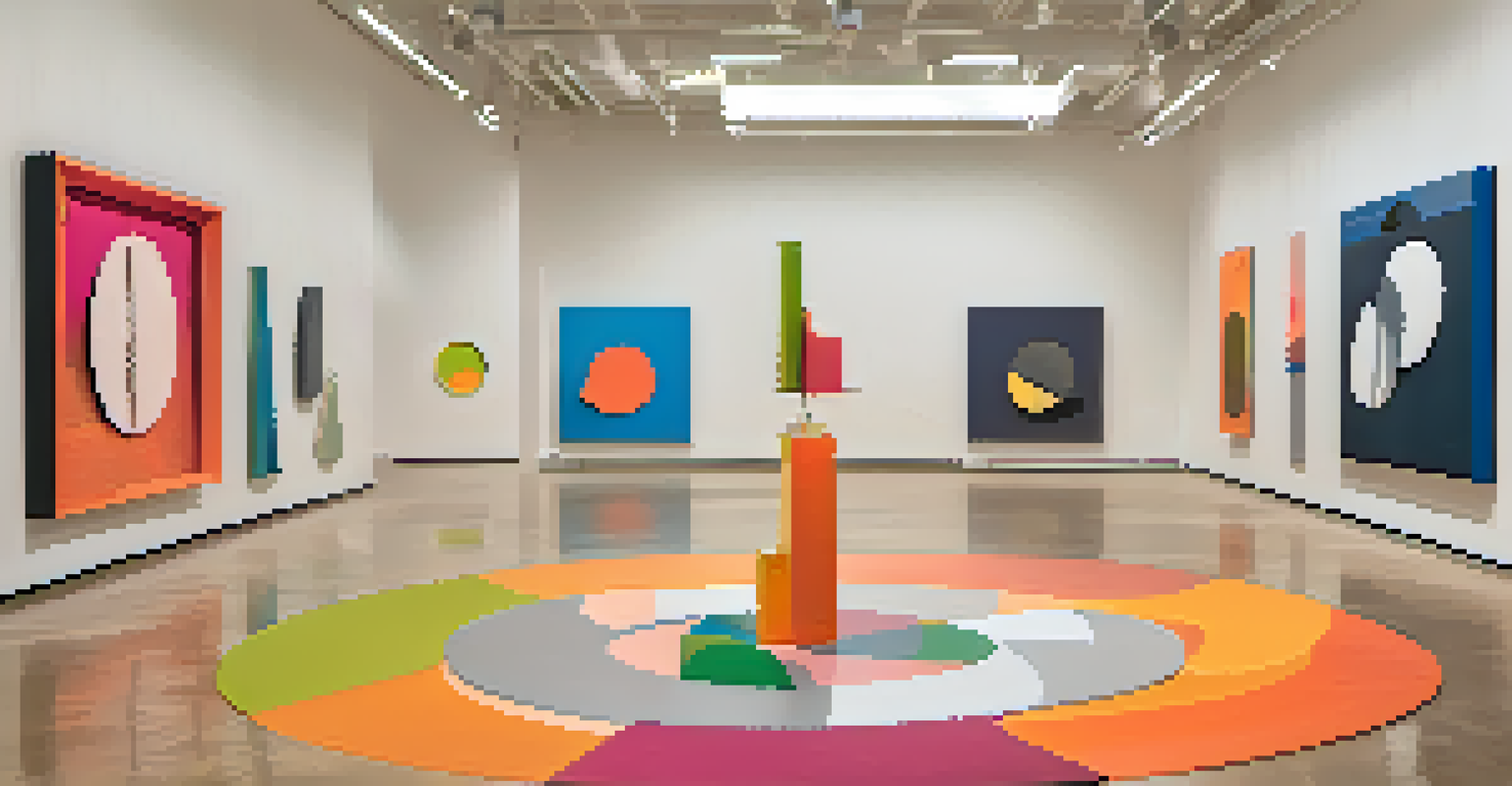Disability in Sculpture: 3D Representations and Interpretations

Understanding Disability in the Context of Art
Disability in art often reflects broader societal attitudes and perceptions. Artists have used various mediums to express the complexities of the disabled experience, and sculpture is no exception. This 3D form allows for tactile and spatial exploration, making it a powerful way to engage audiences with themes of disability.
Art is not a mirror to hold up to society, but a hammer with which to shape it.
From the ancient sculptures depicting figures with physical limitations to contemporary pieces that challenge perceptions, disability has always been present in the art world. These representations can evoke empathy, provoke thought, or even spark discomfort, which in turn fosters conversations about inclusion and representation.
By examining the evolution of disability in sculpture, we can better appreciate how artists navigate personal narratives and societal issues. This understanding deepens our connection to the artworks and highlights the significance of diverse representations in our cultural landscape.
Historic Sculptures and Disability Representation
Throughout history, sculptures have depicted individuals with disabilities, reflecting the social attitudes of their time. For example, ancient Greek sculptures often idealized the human form, but there are notable exceptions that portrayed disabilities, highlighting the complexities of human existence. These works invite us to reconsider historical narratives that often overlook disabled individuals.

During the Renaissance, artists like Michelangelo created figures that, while idealized, also hinted at imperfections and human vulnerabilities. Such nuances create a dialogue about the acceptance of all forms of humanity, including those with disabilities, within artistic expression.
Disability Representation in Art
Art has historically reflected societal attitudes toward disability, influencing how individuals with disabilities are perceived and represented.
By studying these historic pieces, we can see how societal views on disability have evolved. Recognizing these shifts helps us understand the impact of representation in fostering acceptance and empathy, paving the way for more inclusive artistic practices.
Contemporary Artists Challenging Norms
In recent years, contemporary artists have emerged who specifically focus on disability within their sculptures, often challenging societal norms. Artists like Sins Invalid and Alison Lapper create works that not only represent disability but celebrate it, redefining beauty and strength. Their sculptures often provoke discussions about body politics and the lived experiences of disabled individuals.
Disability is not a brave struggle or 'courage in the face of adversity.' Disability is an art. It's an ingenious way to live.
These artists utilize various materials and styles to express their unique perspectives, whether through abstract forms or realistic representations. This variety allows for a broader conversation about disability, moving beyond stereotypes and inviting viewers to engage with deeper narratives.
By pushing the boundaries of traditional sculpture, these artists invite us to reconsider our perceptions of disability. Their work serves as a reminder that art can be a vehicle for social change, promoting greater understanding and acceptance of diverse bodies.
The Role of Materiality in 3D Representations
Material choice in sculpture plays a crucial role in conveying themes of disability. Artists often select materials that resonate with their message—whether it's the fragility of glass to represent vulnerability or the strength of metal to symbolize resilience. This choice enhances the emotional impact of the work and deepens the viewer's connection.
For example, a sculpture made from reclaimed materials may reflect themes of transformation and adaptation, mirroring the experiences of many disabled individuals who navigate a world that often feels restrictive. This intersection of material and message creates a layered understanding of disability.
Contemporary Artists Redefine Norms
Modern artists are challenging stereotypes by celebrating disability through innovative sculptures, fostering deeper conversations about body politics.
By embracing diverse materials, sculptors enrich the narrative surrounding disability, inviting viewers to engage with the artwork on multiple levels. This multifaceted approach underscores the importance of representation and the need for a broader dialogue about inclusivity in the arts.
Audience Engagement and Disability Awareness
Sculpture has a unique ability to engage audiences physically and emotionally, making it an effective medium for raising awareness about disability. Interactive installations encourage viewers to navigate space differently, fostering empathy and understanding. This experiential approach invites audiences to reflect on their own perceptions and biases.
For instance, sculptures that require viewers to move around or engage with the work can simulate the challenges faced by individuals with disabilities. This immersive experience not only educates but also promotes a deeper connection to the subject matter.
As audiences engage with these sculptural pieces, they are prompted to consider the broader implications of disability in society. This engagement can lead to greater advocacy and a shift in attitudes, ultimately contributing to a more inclusive environment for all.
Exploring Intersectionality in Disability Art
Disability does not exist in a vacuum; it intersects with other identities, such as race, gender, and socio-economic status. Artists are increasingly exploring these intersections in their work, highlighting how different aspects of identity shape the experience of disability. This approach enriches the narrative and fosters a more inclusive understanding of diverse experiences.
For example, sculptures that represent disabled women of color challenge both ableism and sexism, offering a more nuanced perspective on the struggles faced by marginalized individuals. By amplifying these voices, artists contribute to a broader discourse on social justice and equity.
Intersectionality in Disability Art
Exploring the intersections of disability with other identities enriches the narrative, promoting a more inclusive understanding of diverse experiences.
Understanding intersectionality in disability art encourages us to embrace complexity rather than oversimplification. This enriched dialogue not only deepens our appreciation of the artwork but also propels us toward a more equitable society.
The Future of Disability in Sculpture
Looking ahead, the future of disability representation in sculpture is filled with potential. As conversations around inclusivity and representation continue to evolve, artists are likely to create even more diverse and innovative works. The growing recognition of disability as a vital aspect of the human experience will inspire new narratives and artistic expressions.
Moreover, technological advancements offer exciting opportunities for sculptors to explore new mediums and methods. Virtual reality and augmented reality can further enhance the experience of disability in art, making it more accessible to a wider audience.

As we move forward, it is essential for the art community to continue fostering dialogue around disability and representation. By doing so, we can ensure that the voices of disabled artists are heard and celebrated, enriching the tapestry of our cultural landscape.